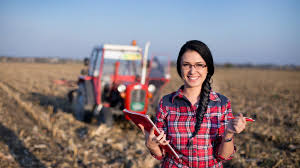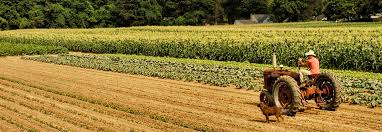
A Program of the Connecticut Veterinary Medical Foundation
Farm owners should plan for disasters likely for their geographic area, and strive to be aware of existing local hazards when doing so. For instance, a solitary farm access road through a wooded area poses many potential problems if a flood, ice storm or other event occurs. Downed trees, high water, or ice may make transportation of feed, water, and animals difficult, and for extended periods. On the other hand, owning an operational electric generator, heavy equipment, and seasonally storing extra feed are assets in a disaster. Look closely at your farm and identify areas that will present problems should disaster strike. If possible, correct the potential problem and plan for solutions.
Farm owners should also identify resources owned by neighbors who may be willing to share and discuss future plans to use those resources should the need arise. An example would be a backhoe or set of panels. Neighbors will be more prepared, and better neighbors, if they are able to pool their resources, rather than try to “go it alone”.
An organized way to approach planning is to group resources required to weather a disaster into categories such as: shelter/feed, identification, medical/rescue and transportation. The response plans of local and state government are also organized this way.
The shelter/feed category includes assessing existing buildings and farm structures. Maintain them in good condition, and as storm-proof as possible. Plan for damaged fencing, utility outages and escaped or trapped animals. Access to supplementary panels or holding facilities may be necessary and construction should occur far in advance of the need. Another task to complete before an emergency is to move stored feed to higher ground or to a more accessible place. If you own dairy cows or have poultry houses that rely on electricity for milking or cooling, buy a generator that is large enough to handle the necessary power load or arrange to rent a generator from a local dealer.



Identification means your animals should have permanent, unique identification so they can be identified and returned promptly. Examples are ear tags that have the name of your farm and/or phone number, brands that specify to whom the animal belongs, paint markings on hooves or coat or clipping initials into hair. It is important to coordinate with your neighbors to ensure your identifier remains unique.
Medical/rescue includes having a medical kit on hand adequate to treat injuries until help arrives. Also ropes, trailers and panels should be kept accessible to help move or rescue any type of animal you have on your farm. Build and maintain a relationship with a veterinarian long before a disaster occurs, but keep in mind that he or she may also be affected by the disaster.
At times, transportation of animals to safety may be the best option. Horses and food animals, however, are not as easy to move and a safe destination may be impossible to identify. Nevertheless, animals will need clean water almost immediately and food within days. Plan for ways to provide clean water during episodes of freezing weather, hurricanes or other disasters which cause power outages or contaminated water. In the event of animal death, guidelines and regulations issued by the Connecticut Department of Agriculture, the Connecticut Department of Environmental Protection and the Connecticut Department of Public Health. Links to these agencies can be referenced under “mortality management.”
As you have read, disaster preparedness on the farm is primarily an individual, your, responsibility. In a disaster, government agencies may not be able to reach your farm or provide the specialized resources you may need in the quantity required to meet those needs. Being prepared for the unexpected, whether a hurricane, a winter storm or a man-made disaster will provide peace of mind and save money and lives in a disaster.
The CTSART program and the 5 Regional Animal Response Teams may be available to assist you with your animals, however, in a disaster there will be many in need and we cannot reliably predict whether we will be available to assist you or that we will have the resources needed for your situation. Further, only state government may clear us to help you and they may have other priorities at that time. Public safety will always take precedence over other considerations and the Regional Animal Response Teams’ primary mission is to facilitate evacuation and shelter of people and household pets. Check with your municipal emergency management official to learn more about emergency planning in your community. Additionally there are many web-based planning resources available. Notably, the Iowa State University’s Center for Food Security and Public Health has many agricultural disaster planning resources available for your use.
Copyright © Connecticut Animal Response Team, a Program of the Connecticut Veterinary Medical Foundation, All rights reserved.
Terms of Use | Contact Us
Developed by CVMF
Hosted by Ipower.com